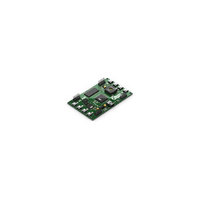ATAVRXPLAIN Atmel, ATAVRXPLAIN Datasheet - Page 3

ATAVRXPLAIN
Manufacturer Part Number
ATAVRXPLAIN
Description
KIT EVAL FOR ATXMEGA128A1
Manufacturer
Atmel
Series
AVR® XMEGAr
Type
MCUr
Specifications of ATAVRXPLAIN
Contents
Board
Silicon Manufacturer
Atmel
Core Architecture
AVR
Silicon Core Number
ATmega128A1
Silicon Family Name
AVR XMEGA
Kit Contents
Board
Rohs Compliant
Yes
For Use With/related Products
ATXMEGA128A1
Lead Free Status / RoHS Status
Lead free / RoHS Compliant
Available stocks
Company
Part Number
Manufacturer
Quantity
Price
Company:
Part Number:
ATAVRXPLAIN
Manufacturer:
Atmel
Quantity:
2
8267B-AVR-12/10
Table 2-1: Available sleep modes for XMEGA.
The
POWER-DOWN:
• In IDLE, most peripherals are still operating – only the Atmel
• In POWER-SAVE, the low frequency Real Time Clock (RTC) timer is still running
• POWER-DOWN is the deepest sleep mode. In this mode most of the device
The XMEGA family also supports two additional sleep-modes which are useful when
a short wake-up time is needed:
• STANDBY, which is POWER-DOWN with system clock source still running.
• EXTENDED STANDBY, which is POWER-SAVE with system clock source still
These two sleep-modes do not give as low power consumption as POWER-DOWN
and POWER-SAVE respectively, but are useful if fast response is vital to the
application.
Note that asynchronous port interrupts and TWI address matches can wake the
device up from all sleep modes. Refer to the device manual for further information
about these sleep modes and operation of them.
non-volatile memories (Flash and EEPROM) are stopped. The DMA controller and
Event system are still active in this mode, allowing for e.g. AD conversions and
transfers via the USART to continue, even though the CPU is not operating. The
device can be woken up by all interrupts.
while the CPU and most other peripherals are stopped. The RTC is commonly
used to wake the device up at timed intervals. Because the system clock source is
stopped in this sleep mode, wake-up takes a bit longer than for IDLE since the
system clock must stabilize before operation.
peripherals are stopped. The device is unable to wake itself up from this mode
since both the peripheral clock and RTC are disabled. This mode therefore relies
on external input, e.g. asynchronous pin interrupts or TWI, to wake the device up.
There are exceptions to this rule: XMEGAs with the battery backup module and
32-bit RTC. The RTC in these devices will run regardless of the sleep-mode.
running.
three
most
commonly
used
modes
are
IDLE,
®
POWER-SAVE
AVR
AVR1010
®
CPU core and
and
3













